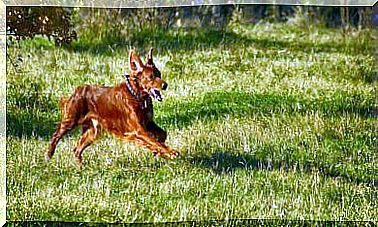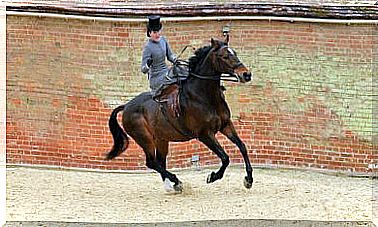Tuberculosis In Dogs

Although tuberculosis in dogs is not a disease that is diagnosed very often, partly because its clinical signs can be confused with other diseases, the number of cases has increased.
This is due to the appearance of virus species resistant to traditional treatments and the increase in immunosuppressive diseases, both in humans and animals.
Some data on tuberculosis
Tuberculosis is an infectious and chronic disease that can affect both humans and domestic and wild animals.
It is caused by bacteria of the Mycobacterium genus . The Mycobacterium tuberculosis and Mycobacterium bovis are the etiologic agents that most affect dogs.
This disease is considered one of the biggest zoonoses. And infections in dogs with M. tuberculosis are an inverse zoonosis, since, in this case, it is the person who transmits the disease to the animal.
In addition, dogs that live with sick people can host the etiologic agent in the pharynx, but without showing tuberculous lesions.
M. bovis and M. avium infections

Author: Soggydan Benenovitch
M. bovis infections occur when dogs ingest raw milk, viscera or the corpses of sick animals. They can also be infected through the respiratory tract or through wounds.
Dogs are also potential spreaders of M. bovis when lesions are located in the intestine or respiratory tract.
However, infection with M. avium is not common. It occurs through the ingestion of tuberculous birds or through contact with their droppings.
Signs of Tuberculosis in Dogs
The clinical signs that the disease presents in dogs are nonspecific:
- Asthenia (weakness);
- Anorexia;
- Progressive weight loss;
- Fever;
- Cough;
- Breathing difficulty;
- Diarrhea.
There may also be inflammation of the lymph nodes and a progressive development of nodular lesions (granulomas) on the skin of the head, neck and extremities, which eventually create ulcers and generate a rough appearance.
Also, in the early stages, the disease usually goes unnoticed, which poses a risk to other animals and people.
In some cases, clinical signs manifest themselves similar to factors caused by stress, such as immunosuppression (decreased immune response) and also similar to pregnancy symptoms.
How Tuberculosis Affects Dogs
The most affected organs in dogs with tuberculosis are the bronchopulmonary lymph nodes and the lung.
Lung lesions are characterized by grey-red inflamed areas that can converge and form cavities, which will open into the pleural cavity or connect with the bronchi.
These lesions spread rapidly and range from acute congestion to hepatization, which consists of the transformation of lung tissue into a solid mass similar to the liver.
Other types of injuries
- Frequently, there may be a nonspecific inflammation that affects the long bones, in which an increase in their bilateral and symmetrical volume may be observed, especially in the extremities;
- In turn, lesions located in the abdominal region often present in the liver. They are yellowish, with a low central zone and irregular hemorrhagic edges.
This causes intestinal adhesions with strictures (narrowing or reduction of the internal diameter of the intestine), paralytic ileus (intestinal distension, slowing or interruption of the passage of what was ingested, without a mechanical obstruction) and ascites (accumulation of serous fluid in the peritoneal cavity, too known as the water belly).
Diagnosis and prevention

Definitive confirmation of tuberculosis in dogs occurs with bacteriological culture, with the detection of the agent in tissues using different laboratory techniques and radiological examinations.
Once the diagnosis is confirmed, experts recommend sacrificing the animal. The reason is that, even if the animal recovers, it may continue to be bacteriologically positive, constituting a health risk for humans and other animals alike.
better prevent
Given the lack of vaccines to treat tuberculosis in dogs, prevention is still the best medicine.
So, avoid giving your animal raw milk or guts. Preferably choose balanced foods or consider that:
- The milk must be pasteurized or boiled;
- Meat should be well cooked.
And, taking into account that we humans can pass tuberculosis to dogs, taking care of our health will also be taking care of our animals.









